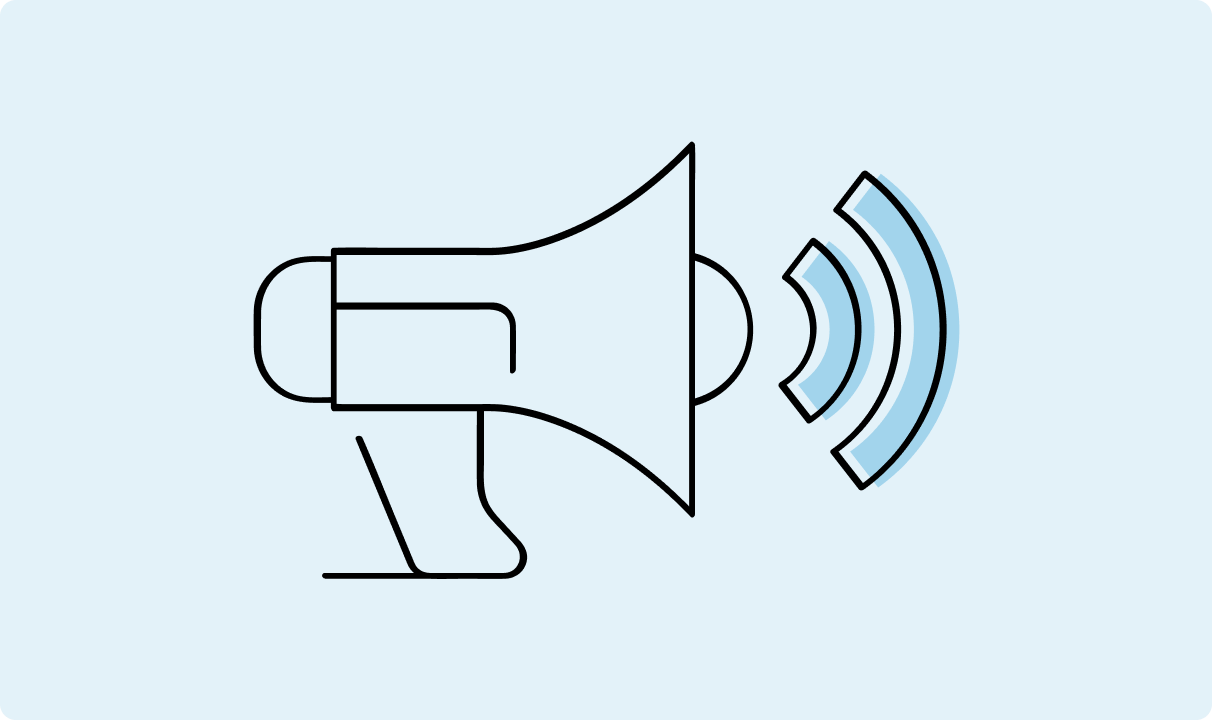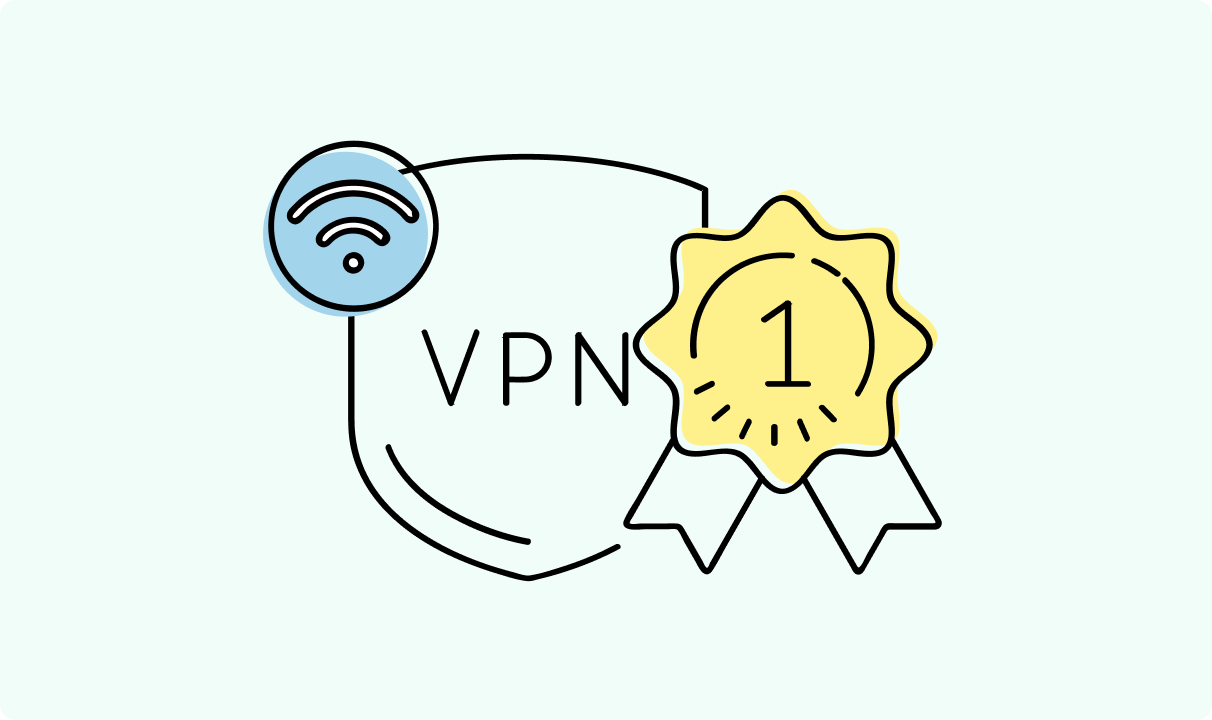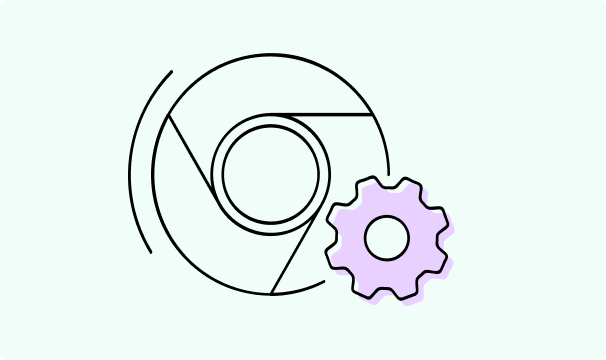15 Best Unbiased News Sources to Trust in 2025
Key takeaways:
- There are no completely unbiased news sources; instead, you should focus on finding biases and cross-checking multiple news outlets critically.
- The least biased news sources are transparent in their funding, editorial standards, factual accuracy, tone, and other reporting biases.
- Lists of unbiased news sources and tools for checking biases are useful for saving time, but cannot replace your critical thinking.

Adomas Šulcas
12 min read

Social media, search engines, and even AI tools create an echo chamber of one-sided news that's meant to keep us engaged rather than fully informed. It fuels the modern distrust in media outlets and the rising political polarization.
You need conscious effort to seek fact-based, balanced, and trustworthy news sources. It requires understanding what unbiased actually means and the skill for spotting news tendencies. But there are tools to check media biases, and a list of unbiased news sources will get you started, however.
What Does “Unbiased” Really Mean in News?
No single news source is without any bias. Journalists are people like everybody else, and they make decisions based on their own preferences. What to cover, how to frame it, what headline to choose - these and many more smaller choices form biases. They are unavoidable.
But don't let this difficult truth discourage you from looking. The least biased news sources will never tell you that they are completely unbiased. Instead, they'll be transparent about their biases and treat different perspectives fairly.
Biases can be detected and sources judged for ourselves. A good start is understanding at least some of the major media biases.
- Political bias - a systematic favoritism towards a political party or their agenda, shaping what is covered or omitted. For example, left-leaning or right-leaning.
- Cultural bias - reinforcing cultural values, norms, or other aspects of a certain, often of the dominant, group. For example, sinocentrism, eurocentrism, western-centrism, and many others.
- Corporate bias - prioritizing the interests of advertisers, investors, corporate owners, or economic elites, often for financial gain and at the expense of the public good. For example, industry-aligned, pro-business, labor skepticism.
- Ideological - advancement of a specific worldview through selective fact reporting, narratives, or omissions. For example, libertarian, progressive, religious media.
The same news outlet can be neutral and report verifiable facts on one topic, but take sides and lack objectivity on another. That's why media literacy is so important - it's up to you to stay informed and make an effort for your news sources to be as diverse as possible.
How to Tell If a News Source Is Unbiased
Many media literacy courses and books start by teaching how to critically evaluate news sources. Such a process isn't possible if the source isn't transparent, however. The fact that these signs are available for analysis is already an indication of an unbiased news website.
- Ownership and funding. Unbiased news sources do not hide their affiliations and funding, often clearly stating them.
- Clear separation of news and opinion. It's common for factual news reports and opinion pieces to be separated into different sections when a news source is unbiased.
- Editorial standards. An unbiased news source will follow journalists' code of ethics or formal regulations, such as the UK’s Editors’ Code of Practice.
- Corrections policy. Trustworthy news outlets are not afraid to retract facts that were proven to be incorrect and have clear guidelines on when such actions are taken.
- Balanced sourcing and factual accuracy. Only in rare cases can an objective news report rely on a few sources. It's a sign of an unbiased news source to use multiple references and provide the reader a way to verify facts.
- Tone, framing, and language. The same facts can be reported in many different ways. Evaluating the form of expression used is an important part of deciding whether a news source is unbiased.
Best Tools to Check Media Bias
The process of evaluating which news sites are the least biased and how exactly they are biased is made much easier with the right tools. Here are some useful platforms to help you find unbiased news sources.
Recommended Media Bias Rating Platforms
AllSides
AllSides is an American media company that provides headlines and media coverage of mainly political and economic news. It stands out by rating online news sources on a point scale and highlighting different political biases of news headlines - center, right, and left.
If you're interested in finding biases based on the USA political spectrum, AllSides is a great tool to use. It has a convenient app and is free to use for everyone. The only downside is that only political bias is evaluated, which might not be relevant to all contexts and can lack nuance.
Ad Fontes Media (Media Bias Chart)
The media bias chart by Ad Fontes Media is an extremely useful tool for evaluating media outlets. It's based on a rigorous methodology that puts news outlets on a two-axis scale. One is for political bias from left to right, and the other measures reliability when it comes to reporting facts.
The chart is interactive, with lots of useful filters and explanations for each media source. There's also an app and a newsletter to inform you about updates and news. While mostly used by educators and schools, it's a must-have tool for anyone thinking critically about news.
Media Bias/Fact Check (MBFC)
Similar to the Media Bias Chart of Ad Fontes, the Media Bias/Fact Check (MBFC) tool assesses the political bias and factual reporting of media sources. It uses a combination of objective measures, such as wording, headlines, and fact-checking history, as well as subjective reviews of users.
MBFC allows its extensive database of over eight thousand sources to be conveniently accessed by all. You can search it with various filters as well as integrate it into other platforms with an API.
Ground News
Ground News is a news aggregation platform designed to easily show media biases and provide a spectrum of perspectives for users. Its free version is quite limited, but with a small monthly subscription, you can access unbiased news sources quite easily.
There is a well-functioning app and website, and various other features, such as Blindspot, which highlights stories disproportionally covered by one or the other side. As with other media bias sites, it's largely based on the US political spectrum and often relies on data from non-profits.
Fact-Checking Websites
PolitiFact
PolitiFact is a nonprofit American fact-checking organization operated by the Poynter Institute. It aims to evaluate the accuracy of statements made by elected officials or political candidates, sometimes by spokespersons of interest groups.
Their "Truth-O-Meter" scale gives a quick visual way to check various popular political claims and even helps to track political promises. The choice of available claims is mainly US-based, and some find it biased in the selection of claims to cover.
Snopes
Snopes is one of the oldest and best-known independent fact-checking websites, founded way back in 1994. Originally, it focused on urban legends, myths, and folklore, but over time, it grew to cover much more.
You can find a wide array of fact checks for political, cultural, healthcare, and other viral topics prone to misinformation. It's a trusted reference for investigative reports and fact checks on many topics.
FactCheck.org
FactCheck.org is a nonprofit website with a mission to monitor the factual accuracy of statements made by politicians and public figures. It almost exclusively focuses on political claims made in speeches, interviews, debates, and elsewhere.
It's affiliated with the Annenberg Public Policy Center of the University of Pennsylvania, which gives it a lot of credibility. Yet, their analyses aren't broad and focus on separate claims instead of larger media ratings.
Browser Extensions & Apps
NewsGuard
NewsGuard is an internet trust service combating misinformation with credibility and transparency ratings of news and media websites. It employs trained journalists and gives scores from 1 to 100.
It stands out the most by its convenient app with a news ratings database and browser extension. The latter is available on all major browsers - Chrome, Edge, Firefox, and Safari, giving information on news trustworthiness while you scroll the web.
Ground News plugin
The Ground News browser extension is highly regarded as one of the best for helping users to save time, critically assessing news source bias. The extension shows what other news outlets are reporting on the same story.
That way, you can quickly compare how different sources across the political spectrum cover a news story. The extension covers news from over fifty thousand news sources and functions on social media platforms like Facebook, Twitter, and Reddit.
Top 15 Most Unbiased News Sources in 2025
No single news outlet from this list will be enough as an unbiased news source. You'll need to visit and cross-reference multiple of them on a daily basis. It’s much easier to do when you can bypass geo-blocks and other restrictions with high-speed VPN servers from CometVPN.
Public Broadcasters
1. BBC
British Broadcasting Corporation, or BBC, for short, is a public service broadcaster funded mainly by the United Kingdom government. Known globally for comprehensive international news coverage.
- Ownership/Funding: UK public broadcaster funded by TV license fees.
- Bias Ratings:
- AllSides: Center
- Ad Fontes: Middle
- Strengths: Extensive global reach, high editorial standards, strong investigative journalism.
- Limitations: Accused at times of Western and British cultural media bias, UK government influence.
2. NPR
National Public Radio (NPR) is a nonprofit media organization with many members offering news and cultural programs across the United States.
- Ownership/Funding: Member station fees and funding from another nonprofit - Corporation for Public Broadcasting (CPB), and private donations.
- Bias Ratings:
- AllSides: Lean Left
- Ad Fontes: Middle
- Strengths: Extensive local and national coverage, strong cultural content.
- Limitations: Susceptible to political funding pressures; criticized for liberal and US-centric bias.
3. PBS
Public Broadcasting Service (PBS) is a US public broadcaster known for its TV content across local member stations. Widely regarded for neutral, long-form journalism, such as documentaries.
- Ownership/Funding: primarily funded by government grants, CPB, and significant viewer donations.
- Bias Ratings:
- AllSides: Lean Left
- Ad Fontes: Middle
- Strengths: In-depth documentaries, educational programming.
- Limitations: Criticized for liberal-leaning editorial practices. Vulnerable to federal funding cuts.
4. ABC News (Australia)
Australian Broadcasting Corporation (ABC) delivers news and current affairs with a broad reach domestically. It has a government mandate to be independent from government journalism and entertainment.
- Ownership/Funding: Funded by the Australian government through parliamentary appropriation.
- Strengths: Trusted for balanced coverage of Australian issues and global matters.
- Bias Ratings:
- Media Bias/Fact Check: Left-center bias
- Limitations: Bias towards Western-centric and progressive reporting.
5. DW (Germany)
Germany's international public broadcaster focused on global news in multiple languages. Targets global audiences with news focusing on Germany-related affairs around the world.
- Ownership/Funding: Funded by the German government budget via the Federal Foreign Office.
- Strengths: Over 32 languages, global focus, detailed analysis of European and international affairs.
- Bias Ratings:
- AllSides: Center
- Limitations: Some accuse the pro-European German government of setting agendas.
Global Wire Services
6. Reuters
One of the best-known international news organizations with a global network of reporters in key locations. Reports and provides news content for many other local and international news outlets.
- Ownership/Funding: owned by British media conglomerate Thomson Reuters.
- Strengths: Factual, fast, and broad coverage, one of the largest networks of reporters.
- Bias Ratings:
- AllSides: Center
- Ad Fontes: Middle
- Limitations: Criticized for lack of nuance and overly neutral reporting by some.
7. Associated Press (AP)
A US-based global news agency owned cooperatively by various US newspapers and broadcasters. One of the oldest news cooperatives in the world, focusing on speed.
- Ownership/Funding: Cooperative ownership by US news organizations; revenue from member fees and licensing.
- Strengths: Trusted wire service with emphasis on factual, rapid global news coverage.
- Bias Ratings:
- AllSides: Left
- Ad Fontes: Middle
- Limitations: Faces criticism for the US-centric framing of global stories.
Independent / Non-Profit Media
8. ProPublica
An independent and nonprofit newsroom producing investigative journalism. Specializes in long-form reporting on corporate malfeasance, government corruption, and social injustice
- Ownership/Funding: Funded through grants, donations from foundations, and individual contributions.
- Strengths: In-depth investigative reports driven by public interest.
- Bias Ratings:
- AllSides: Lean left
- Ad Fontes: Skews Left
- Limitations: Perceived by some as progressive-leaning due to topic selection.
9. Christian Science Monitor
An international news organization known for thoughtful coverage and editorial independence. Despite some religious bias, it’s fairly secular in content and topic selection.
- Ownership/Funding: Owned by the Christian Science Church, Scientists, and other donations.
- Strengths: In-depth reporting on social and global issues.
- Bias Ratings:
- AllSides: Center
- Media Bias/Fact Check: Least biased
- Limitations: Slow news cycle, Christian-centric topic selection, slow news cycle.
10. The Conversation
A nonprofit media outlet publishing free to republish news and research analysis written by academics and researchers. Fact-heavy, but rather academic in style.
- Ownership/Funding: Funded by university partnerships, grants, and donations.
- Strengths: Evidence-based, neutral in tone, scholarly perspectives on news and current affairs.
- Bias Ratings:
- AllSides: Lean left
- Ad Fontes: Middle
- Limitations: Limited direct reporting, less accessible for wider audiences.
11. Reveal - Center for Investigative Reporting
Center for Investigative Reporting (CIR) is a nonprofit newsroom producing investigative journalism. Focuses on corporate accountability, criminal justice, and inequality
- Ownership/Funding: Foundations, donations, and grants.
- Strengths: High-impact, researched journalism, offers podcasts and documentaries.
- Bias Ratings:
- Ad Fontes: Skews left
- Media Bias/Fact Check: Left-center Bias
- Limitations: Small organization, slow activist-driven news cycle.
International Sources
12. Al Jazeera English
A global news channel reporting factual news and analysis from a Middle Eastern perspective. Praised for actively giving voice to issues of the global south.
- Ownership/Funding: Owned by the Al Jazeera Media Network, funded by the Qatar government.
- Strengths: Focus on the Middle East and other non-Western perspectives, broad international coverage.
- Bias Ratings:
- AllSides: Lean left
- Ad Fontes: Skews left
- Limitations: Criticized for pro-Qatar bias, too anti-Western.
13. France 24
International news channel affiliated with the French government, broadcasting in various languages. Tends to focus on European and secular topics.
- Ownership/Funding: Owned by the French government (via France Médias Monde).
- Strengths: Good fact-check record, with a network of international reporting,
- Bias Ratings:
- Media Bias/Fact Check: Least Biased
- Limitations: Criticism for downplaying French colonialism and following government lines.
14. NHK World (Japan)
Nippon Hōsō Kyōkai (NHK) is Japan’s public broadcaster covering international news in various foreign languages. Widely considered a trusted source for Asia-Pacific news and educational programming.
- Ownership/Funding: Publicly funded by the Japanese government.
- Strengths: High-quality disaster coverage, cultural insights into Asian countries.
- Bias Ratings:
- Media Bias/Fact Check: Left-center bias.
- Limitations: Editorial bias toward official Japanese government policy perspectives.
15. CBC (Canada)
The Canadian Broadcasting Corporation (CBC) is the national public broadcaster of TV, radio, and digital programs. Compared to the US media, it is less partisan while covering world events.
- Ownership/Funding: Funded primarily by the Canadian government through parliamentary votes.
- Strengths: Comprehensive Canadian news coverage, strong local journalism.
- Bias Ratings:
- AllSides: Lean left
- Ad Fontes: Middle
- Limitations: Accused of liberal bias and topic selection by some critics.
How to Consume News Intelligently
Since there is no perfectly unbiased news source, the key to consuming news intelligently is to become active, critical, and reflective about your news feed. Start by comparing the same story across multiple outlets with different political, cultural, and other leanings.
Tools like AllSides and Ground News can help to save time, but don't expect them to replace your critical thinking. They apply their own definitions of what bias is and might highlight facts not necessarily important to you.
What's worse is that they might limit you only to headlines, while a smart reader engages with the original sources directly. Critically reading more or less unbiased news sources requires a systematic approach for noticing framing, loaded language, selective sourcing, and other bias signals.
The point is not to avoid them, but to become aware and actively compare sources with one another. Algorithmic filter bubbles on social media push us to become the exact opposite - passive readers without much control.
Conclusion
Media bias tools and lists of unbiased news sources, such as this one, can help you save time. But they cannot replace your news diet and critical thinking, which everyone must develop for themselves. Pick a few outlets from the list and get started.
Frequently Asked Questions
Are there truly unbiased news sources?
There are no truly unbiased news sources. Just as people have a bias towards themselves and their survival, so do their organizations. The best news outlets can do is to be transparent about their influences. This gives readers an opportunity to freely judge the biases and compare them with other sources.
How can I tell the difference between factual reporting and opinion content?
Every opinion piece uses some facts, and every factual reporting unavoidably includes interpretations. Their difference lies in intent. Factual reporting focuses on stating facts and aims to use as neutral language as possible without implying judgments. Opinion pieces aim to express subjective judgments and interpretations to form readers' beliefs.
Is government-funded media more or less biased than private media?
Both forms of media can exhibit bias. In democratic countries, government-funded media tend to be more transparent about their biases as it's regulated more strictly. Private media may exhibit more concealed biases arising from market pressures or other factors. These are generalizations as each media outlet and country differs.
How do social media algorithms affect what news I see?
Social media algorithms aren't set to show you the least biased news sources. The exact opposite is often true - it selectively curates and prioritizes content that will increase your engagement on the platform. This creates a risk of closing yourself in a limited-diversity news cycle. Exiting from which takes conscious effort.
Can media bias rating tools be trusted?
To a certain degree, media bias rating tools can be trusted, but in the end, the decision rests on your critical thinking and research skills. It's important to use media bias rating detectors as just another tool to aid your critical thinking, but never to replace it.

Author
Adomas Šulcas
Chief Operating Officer at Growth Bite
Adomas is a technical writing expert who founded Growth Bite, a digital marketing company, focused on providing high-value SEO and content marketing services to SaaS companies.
Related articles

4 min read
Best Residential VPN Providers in 2025
A Virtual Private Network (VPN) encrypts your traffic and hides your IP address. The way these functions are accomplished affects various aspects of your online privacy and security.
Here, we'll consider using residential IP addresses instead of those originating from a data center. A residential VPN has advantages compared to traditional ones, but there are some caveats. It all boils down to residential VPN providers.
The worst ones may even create more risks than benefits. We'll end this article with a list of the best residential VPN providers on the market.

Guoda Šulcaitė
4 min read
Ethernet vs Wi-Fi: Which One is Better?
Ethernet and Wi-Fi are the two main ways to connect your computer to the internet. While Wi-Fi has received significantly more attention in recent years, especially among consumers, due to its simplicity and flexibility, ethernet is still widely used in various other applications.
Even if Wi-Fi is significantly more popular, it isn’t strictly better. Both methods have their benefits and drawbacks. Wi-Fi’s popularity comes from its ease-of-use and flexibility, but an ethernet connection can be much more useful in certain scenarios.

Adomas Šulcas

5 min read
How to Change Chrome Proxy Settings: The Ultimate Guide
A proxy server is an easy alternative to a VPN that can perform most of the functions of the latter. It’s a server that stands between your device and the destination server, taking your connection requests and forwarding them in your name.
Destination servers in almost all cases see the proxy server as the originator of the request. As such, proxies are widely used in various, mostly business-related applications whenever privacy, security, location changing, and several other factors are at play.

Guoda Šulcaitė